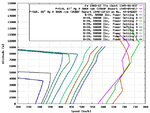Erich
the old Sage
funny with Ethell book which is not correct and the so called LW hierarchy as I said the Ta was not design to take on the B-29, read my last line of my previous posting this was indeed the design for -----------taking on the P-51..this was told to me by a veteran of the unit that I have referred to in the past as just one instance.
the high altitude fighter was to be jet driven to take on higher flying bombers. for the summer and fall of 45 only JG 301 and parts of another JG were to have the Ta and in fact much of JG 300 was destined to have the Me 262 for Reich defense.
the 262 and similar jet propelled units were the wave of the future not prop driven
the high altitude fighter was to be jet driven to take on higher flying bombers. for the summer and fall of 45 only JG 301 and parts of another JG were to have the Ta and in fact much of JG 300 was destined to have the Me 262 for Reich defense.
the 262 and similar jet propelled units were the wave of the future not prop driven

